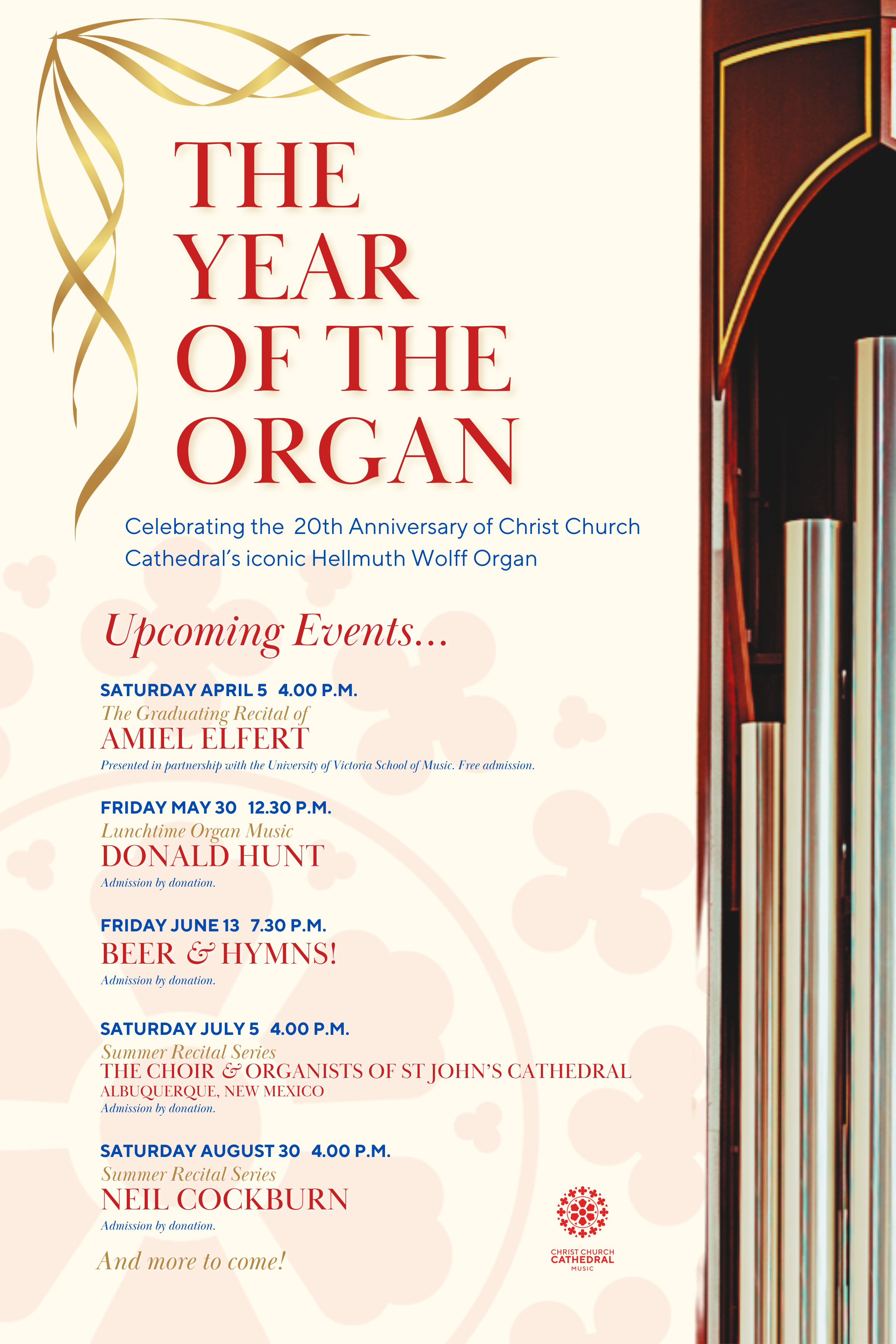More than 20 years ago, Cathedral parishioners and members of the wider Victoria community provided the funds that brought the Hellmuth Wolff organ from vision to reality. Since then, this magnificent instrument has been in use for more than 20,000 hours, including 4,000 Cathedral services, 3,000 rehearsals, 200 concerts, and many thousand hours of late-night practice by Cathedral musicians, as well as distinguished organists from around the world.
After two decades of daily use, the organ's delicate mechanism – the complex system of moving "trackers" that transmit impulses from the organist at the console to the instrument’s pipework – requires thorough renewal. The four keyboards require rebalancing and repair. Some of the instrument’s pipes have fallen silent, and need to be returned to full resonant voice. A plan which comprises of the cleaning and regulating of the organ’s 4,000 pipes and refurbishment of the organ’s various mechanical and electrical components will be carried out by leading Canadian organ builders Juget-Sinclair of Montreal, Quebec. The firm is a fitting successor to Hellmuth Wolff (1937-2013) and has already played a key role in restoring several of his other instruments including his landmark Opus 24 (1981) in Redpath Hall at McGill University.
Estimated to cost $150,000, this vital work will only be possible with the continued support of generous donors like you who see the value this wonderful instrument brings to the life of the cathedral and the wider Victoria community.
-
Online: Canada Helps:
https://www.canadahelps.org/en/charities/christ-church-cathedral/ -
Use the pull-down menu to select “Music Fund.”
-
Be sure to specify “Organ Project” in the donor message [see image]
-
Cheque: Cheques should be made payable to “Christ Church Cathedral” with “Organ Project” in the memo line. Cheques can be dropped off or mailed to the Deanery (Cathedral Office), 930 Burdett Avenue, Victoria, BC, V8V 3G8.
-
E-transfer: Use giving@christchurchcathedral.bc.ca. Please write “Organ Project” in the optional message to recipient field
-
Credit card: Please visit or call the Deanery. 250-383-2714
-
Gift of securities: Please consult the Director of Music (dhunt@christchurchcathedral.bc.ca)




.jpg)

.png)